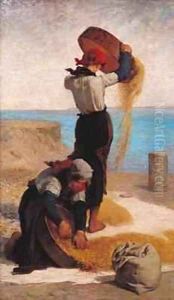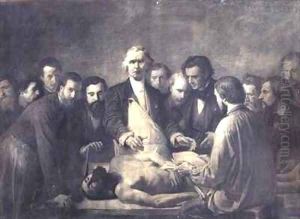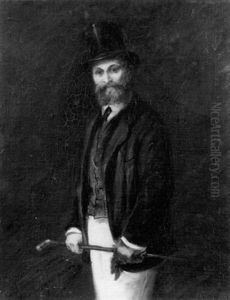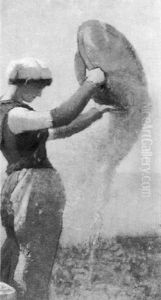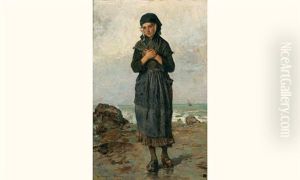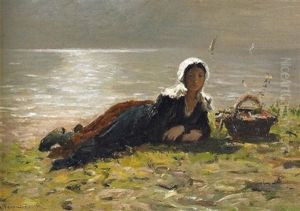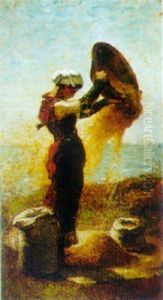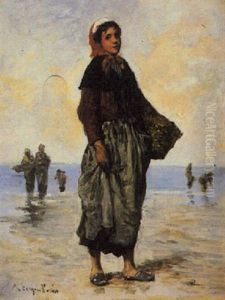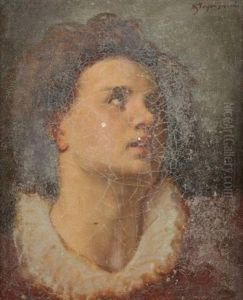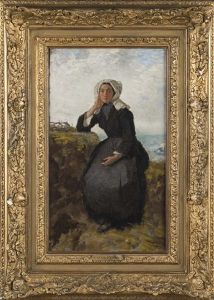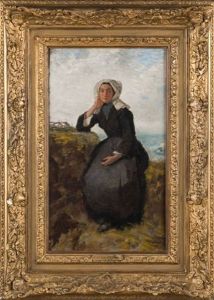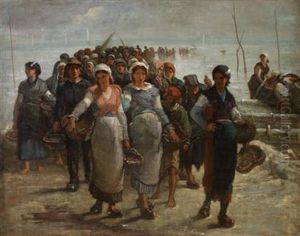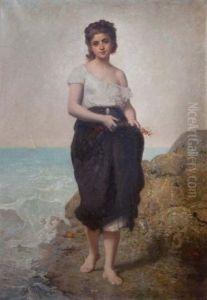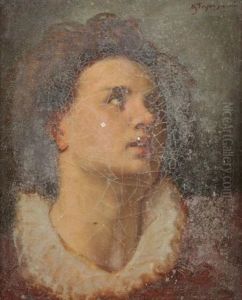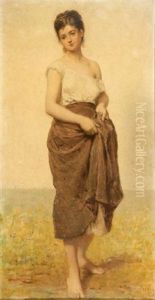Francois Nicolas Augustin Feyen-Perrin Paintings
François Nicolas Augustin Feyen-Perrin was a French painter born on April 12, 1826, in Bey-sur-Seille, in the Moselle department of France. He was the younger brother of Jacques-Eugène Feyen, who was also a painter. Augustin Feyen-Perrin showed an early interest in the arts and would later move to Paris to pursue a career in painting.
In Paris, he studied under the tutelage of influential French artists such as Léon Cogniet and Ary Scheffer. He began exhibiting his work at the Paris Salon, an official art exhibition of the Académie des Beaux-Arts in Paris, in the 1850s. His submissions to the Salon received positive attention and helped to establish his reputation as a skilled painter.
Feyen-Perrin's works were predominantly in the genre of portraiture and historical scenes. However, he is perhaps best known for his genre paintings that depicted scenes of everyday life, particularly those set in coastal regions. He had a particular affinity for the Normandy coast, and many of his works feature the sea, fishermen, and coastal landscapes. His paintings are characterized by their detailed realism and sensitivity to the effects of light and atmosphere.
Throughout his career, Feyen-Perrin received several honors for his contributions to art. He was awarded medals at the Salons and was recognized by the French government. In 1873, he was made a Chevalier of the Legion of Honor, which is one of the highest distinctions in France for extraordinary contributions to culture and the arts.
Augustin Feyen-Perrin's artistic legacy includes not only his contributions to French painting but also his influence on other artists of his time. His works can be found in various museums and collections, both in France and internationally.
François Nicolas Augustin Feyen-Perrin passed away on October 23, 1888, in Paris. Despite the passage of time, his work remains a testament to the rich tradition of French painting in the 19th century, and his paintings continue to be appreciated for their beauty and historical value.
